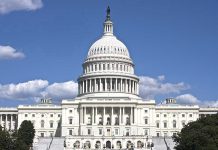
President Trump’s executive order aims to halt federal support for gender-affirming care for minors, reigniting debates on medical ethics and children’s rights.
Key Takeaways
- Trump’s executive order redefines “gender-affirming care” as “chemical and surgical mutilation” of minors.
- Federal agencies are mandated to rescind reliance on guidelines from the World Professional Association for Transgender Health.
- The order cuts federal funding to medical institutions performing gender-affirming procedures on minors.
- Over 26 US states have already implemented similar restrictions on transgender care for minors.
- The order faces criticism from transgender rights advocates but support from conservative groups.
Trump’s Executive Order: A Paradigm Shift in Transgender Care
On January 28, 2025, President Donald Trump signed an executive order that has sent shockwaves through the medical community and reignited debates on the ethics of gender-affirming care for minors. The order, titled “PROTECTING CHILDREN FROM CHEMICAL AND SURGICAL MUTILATION,” aims to end federal support for what it terms as “chemical and surgical mutilation” of children.
The executive order mandates federal agencies, including the Department of Health and Human Services (HHS), to rescind their reliance on guidelines from the World Professional Association for Transgender Health (WPATH). It also requires a comprehensive review of literature on best practices for promoting the health of children with gender dysphoria.
🚨🇺🇸 TRUMP BANS FEDERAL FUNDS FOR “GENDER-AFFIRMING CARE” IN SWEEPING EXECUTIVE ORDER
Trump signed a major executive order cutting all federal funding for gender-affirming medical procedures for minors, calling them “barbaric” and vowing to end taxpayer support for such… https://t.co/IuYJ5Rd9Fx pic.twitter.com/f3IiVLNNge
— Mario Nawfal (@MarioNawfal) January 29, 2025
Financial Implications and Legal Consequences
One of the most significant aspects of the order is its financial implications. Federal funding will be cut to medical institutions that continue to perform gender-affirming procedures on minors. This includes directing federally-run insurance programs to exclude coverage for gender transition treatments for individuals under 19 years of age.
The order also opens the door for potential criminal investigations and lawsuits against medical professionals who perform these procedures. The Department of Justice is directed to enforce laws against female genital mutilation and investigate deceptive practices related to these medical interventions.
A Contentious Debate
The executive order has intensified the already heated debate surrounding so-called gender-affirming care for minors. Supporters of the order, including conservative groups, view it as protecting children from harmful medical interventions. On the other hand, transgender rights advocates argue that the order restricts access to necessary medical care.
It’s worth noting that over 26 US states have already implemented similar restrictions on transgender care for minors. This trend, coupled with the federal executive order, signals a significant shift in policy regarding transgender healthcare in the United States.
Scientific Uncertainty and International Perspectives
While American medical associations argue that gender care is necessary for some youth, the scientific evidence supporting these interventions is disputed. Recent reviews in European countries and a UK review have highlighted “remarkably weak” evidence on medical interventions for children with gender dysphoria.
This international perspective adds another layer to the complex debate surrounding gender-affirming care for minors in the United States. As the country grapples with these issues, the Trump administration’s actions are seen by some as a significant step towards ending what they term as “gender ideology” in the U.S.
Looking Ahead
As the executive order takes effect, it is expected to face legal challenges. The debate over gender-affirming care for minors is far from over. While some argue for a federal law to permanently end what they call “child gender butchery,” others maintain that these medical interventions are necessary and life-saving for transgender youth.
As this contentious issue continues to unfold, it will undoubtedly remain at the forefront of medical, ethical, and political discussions in the coming years. The impact of this executive order on the lives of transgender youth and the medical professionals who treat them remains to be seen.









